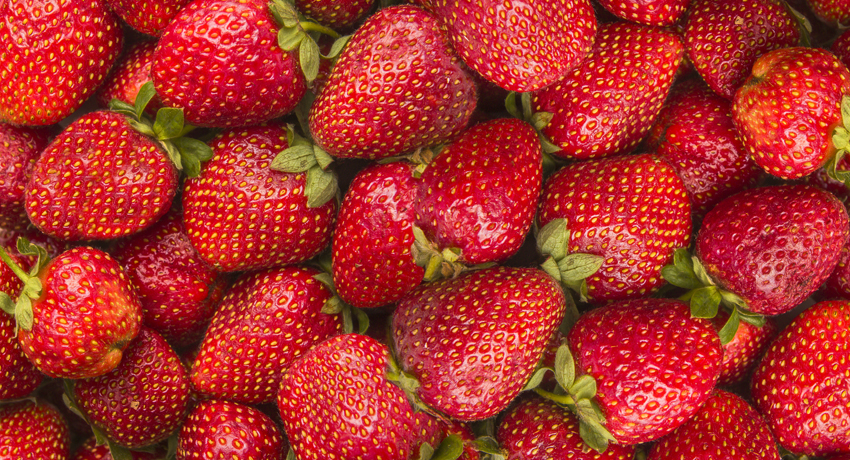Chefology: On Strawberries, Soy, and Cockroach Sex
Welcome to Chefology, where married couple Ben Wolfe (a Harvard microbiologist) and Scott Jones (the chef de cuisine at No. 9 Park) explore the relationship between biology and haute cuisine. This is, quite literally, a marriage of science and cooking.

Strawberries photo via Shutterstock
Sometimes our seemingly separate lives as a chef and scientist collide in unexpected ways. On a recent day in our house, it was strawberries, soy sauce, and cockroach sex that brought us together.
One of Scott’s favorite tools for menu-writing is Niki Segnit’s The Flavor Thesaurus. During the late summer, Scott came across a passage about the similarity between tomatoes and strawberries. They both contain a type of chemical compound called furanones. “Try substituting one for the other in your favorite strawberry and tomato dishes,” Segnit suggested.
Drawing inspiration from a classic dish from New York restaurant Babbo (mint-flavored “love letters”), and the traditional practice of adding tomato puree to pasta, Scott added pureed strawberries to pasta dough and rolled out fazzoletti, or “handkerchiefs.” He topped the pasta with speck and a calaminth (a cross between mint and oregano) pesto, creating a dish that contained strawberries and mint, but tasted like tomatoes and oregano. When the team tried the dish, no one could guess that it was made from strawberries, but thought it was a typical tomato flavored noodle. Scott was excited.
Meanwhile, Ben was doing research for an article on the role of yeasts in providing the flavors of soy sauce and miso. During the fermentation of grains to make soy sauce, one species of yeast called Zygosaccharomyces rouxii produces that characteristic dark caramel flavor that we associate with soy sauce. It turns out that this flavor comes from several different types of furanones produced by the yeast.
When we came home one evening to discover that we both had furanone revelations, we decided we had to learn more about these delicious flavor chemicals.
It turns out that there are many types of furanones, and they provide the essential flavor profiles of some of our favorite foods. The furanone found in both tomatoes and strawberries is 4-hydroxy-2,5-dimethyl-3(2H)-furanone (HDMF), commonly known as furaneol. It can be found in many other foods including pineapples (where the chemical was first discovered) and raspberries. There are furanones that are part of aromatic profile of roasted coffee. Sotolon is a furanone that is essential to the flavor of maple syrup, fenugreek, and curry. When you cook meats and vegetables, chemical reactions produce emoxyfuranones, which have a meaty and brothy flavor.
The natural world hasn’t evolved furanones for the pleasure of humans. These chemicals play important functions in the everyday lives of the organisms that produce them. Some plants use these compounds to jam the lines of communication of invading bacterial pathogens, causing the pathogens to get confused and stop growing. The seaweed Delisea pulchra prevents bacteria from growing on its surface by secreting furanones.
But perhaps the most tantalizing use of furanones in nature is this: In the large wingless cockroach, males secrete a caramel-flavored furanone that’s attractive to the lady cockroaches. Let’s just hope it never winds up on your dinner plate.
To learn more about furanones, check out this awesome paper (it’s behind a paywall, sorry): J. Colin Slaughter. 1999. The naturally occurring furanones: formation and function from pheromone to food. Biological Review: 259–276.


